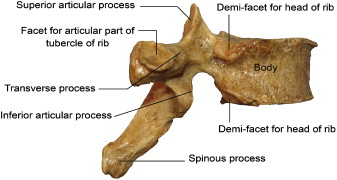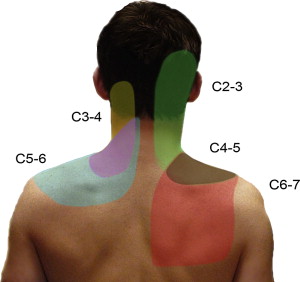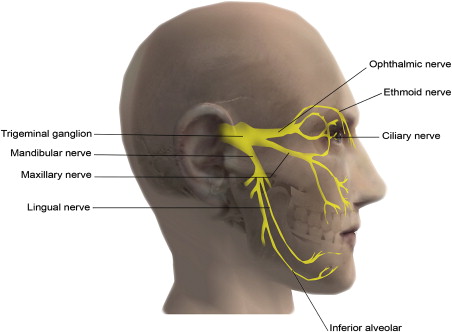Pain in patients who have cancer can be caused by direct effects of the tumor or by complications of treatment, or it can be unrelated to the disease or its treatment. This article discusses interventional pain procedures in the treatment of head and neck pain as they relate to malignancies and cervicogenic headache and neck pain.
The great humanitarian, physician, and Nobel Laureate Albert Schweitzer described the nature of pain and the obligation and privilege that a physician holds to try and relieve it. Referring to the duty of physicians, he stated, “We must all die. But that I can save him from days of torture, that is what I feel as my great and ever new privilege. Pain is a more terrible lord of mankind than even death itself.” Practitioners treating pain, as it relates to the head and neck, can relate to the concerns of Dr. Schweitzer. Many of their patients suffer pain as a result of malignancies. Head and neck cancer accounts for 5% to 10% of malignant tumors, and the cure rate of tumors of the head and neck region is only 35%. Pain is a presenting symptom in 20% of patients having tumors of the oral cavity and is experienced by 40% to 80% of patients having head and neck cancer. These patients are not only coming to grips with their increased likelihood of death but also with the potential for pain and the possibility of impairment of such simple functions as swallowing and breathing. Another common but potentially debilitating cause of head pain is cervical spine abnormalities, which cannot only produce neck pain but cervicogenic headache as well.
Pain in patients who have cancer can be caused by direct effects of the tumor (eg, invasion of bone by tumor, nerve compression) or by complications of treatment (eg, radiation fibrosis, chemotherapy-induced neuropathy), or it can be unrelated to the disease or its treatment. The aggressive use of pharmacologic treatments (nonsteroidal anti-inflammatory drugs [NSAIDS], opioids, antidepressants, muscle relaxants, anticonvulsants, α 2 -receptor agonists, corticosteroids, and bisphosphonates) is generally successful. When effective pain relief cannot be achieved by these modalities, however, specialized interventional approaches may offer an alternative. These include (1) intraspinal analgesia (opioids and local anesthetics), which is the most commonly used approach; (2) neurosurgical techniques (eg, cordotomy, rhizotomy, dorsal root entry zone lesioning [DREZ], hypophysectomy), most of which involve severing a component of the nerve conduction pathway involved in pain; (3) nonsurgical interventional procedures, including sympathetic and somatic nerve blocks in addition to localized injections of anesthetic agents with or without steroids, and radiofrequency ablation and nonablation procedures. This topic emphasizes the application of some interventional pain procedures in the treatment of head and neck.
Mechanisms of pain
Cervicogenic
The zygapophysial joint, also known as a facet joint, is a synovial joint between the superior articular process of one (lower) vertebra and the inferior articular process of the adjacent (higher) vertebra. There are two facet joints in each vertebral motion segment ( Fig. 1 ). The biomechanical function of each pair of facet joints is to prevent excessive torsion (twisting) of the spine, although allowing a small amount of lateral bending and flexion and extension. As with any synovial joint degeneration, inflammation and injury can lead to pain on joint motion. Restriction of motion secondary to pain can lead to overall physical deconditioning, and irritation of the joint innervation can itself lead to secondary muscle spasm.

It has long been proposed, and more recently accepted, that cervical spine structures, particularly those innervated by the upper three cervical nerves, have the capacity to refer pain into the head and cause neck pain and headache. The anatomic substrate for this referred head pain is the trigeminal nucleus. Anatomically, any nociceptive activity arising from disease or disorders in upper cervical joint structures (ie, zygapophysial joints, C0–C3), in muscles innervated by the upper three cervical nerves, or in the nerves themselves can access the trigeminal nucleus, and thus can be responsible for headache.
Neurophysiologic and anatomic studies have found small-diameter high-threshold pain fibers in the zygapophysial joint capsules of humans and rabbits. In addition, fibers containing several peptides associated with nociceptive transmission have been identified in the synovial folds of the facet joint. Dwyer and colleagues developed diagrams of cervical zygapophysial joint pain distribution in healthy volunteers by provocative injection ( Fig. 2 ). Given the preponderance of clinical data, in addition to insight into the possible pathophysiologic basis, cervical facet joints are increasingly being implicated in degenerative and traumatic head, neck, and posterior shoulder pain.

Despite knowing for many decades that cervical structures can refer pain to the head, knowledge of cervicogenic headache have been slow to evolve. It was not until 1983 that Sjaastad and colleagues put forward the hypothesis that cervical musculoskeletal disorders produced a distinct headache type, which they named “cervicogenic headache.” In 1994, the International Association for the Study of Pain was the first to accept the entity and classification of cervicogenic headache formally and to document the criteria for this headache type. With respect to the wider international community, it was not until 2004 that cervicogenic headache was provisionally accepted as a discrete headache type by the International Headache Society as published in their revised International Classification of Headache Disorders (ICHD-II).
Malignancy
The mechanisms by which cancer can cause pain include (1) direct stimulation of nerve endings, (2) ulceration and infection, (3) compression and involvement of sensory nerves, and (4) bone invasion. Nonnociception pain is also seen when nerve fibers exhibit abnormal excitatory patterns after being severed, which can be seen in patients who have undergone a neck dissection.
Stimulation of nerve endings
Stimulation and sensitization of nociceptor nerve endings in the mucosa and submucosa are characteristic of the initial phases of cancer growth and can be considered to be mainly responsible for local burning sensation, superficial pain, and referred otalgia in exophytic or erosive lesions.
Ulceration and infection
Most cancers that arise from the mucous membranes of the mouth and pharynx tend to ulcerate because of central necrosis and microtrauma. Ulceration does not produce spontaneous pain. Rather, pain is experienced after exposure to a local irritant agent, such as alcohol or acid, or after onset of infection with expression of inflammatory mediators. Movement markedly increases pain caused by ulceration, and its intensity varies from site to site. Exacerbation by functional activity is minimal in static regions, such as the cheek, hard palate, nasal and paranasal cavities, and nasopharynx. It is severe in dynamic structures, such as the tongue, floor of the mouth, soft palate, and faucial arches.
Nerve compression and infiltration
An important cause of head and neck cancer pain is infiltration, compression, or both of one or more branches of the trigeminal nerve (CN V), glossopharyngeal nerve (CN IX), or other sensory cranial nerves ( Fig. 3 ).

Bone invasion
Tumor involvement of bone is the most common cause of cancer pain. Bone pain is purely somatic unless a pathologic fracture is present or tumor extension disrupts a nerve. The pain is usually described as focal and constant, although it may be referred to another site. Patients typically experience several days or weeks of increasing pain; acutely increased bone pain may signal a fracture or neural impingement. Locally, tumors may activate nociceptors by pressure, ischemia, or secretion of locally acting algesic substances (eg, prostaglandin E 2 , osteoclast activating factor). Most pain is probably sensed in the periosteum and synovium.
The cellular and neurochemical changes responsible for pain are incompletely identified. Cancer-related bone pain is caused by a tumor-induced imbalance between bone formation (mediated by osteoblasts) and resorption, which is mediated by osteoclasts. Osteoclasts resorb bone by secreting proteases that dissolve the matrix and by producing acid that releases bone mineral into the extracellular space. The net result of this imbalance is bone destruction, which seems to be essential to the pathophysiology of bone cancer pain.
Pain syndromes associated with malignancy of the head and neck
Tumor involvement of the brain or surrounding skull can result in headache or facial pain, depending on the location and extent of tumor.
Headache
Patients who have cancer and experience new, different, or more frequent headaches should be investigated for brain metastases. Headache occurs in 60% of patients presenting with primary brain tumors and in 35% of those with cerebral metastases.
The pain is usually of mild or moderate intensity, similar to a tension headache; only 25% of patients have awakening or morning headaches. Other associated symptoms and signs include nausea, vomiting, lethargy, photophobia, focal neurologic findings, mental status or personality changes, and sudden-onset (pressure-wave) and nocturnal headaches. The absence of these complaints does not rule out a brain tumor, however.
Multiple metastases, especially to the posterior fossa, and leptomeningeal carcinomatosis are the most frequent intracranial causes of headache. Other non–cancer-related causes include ischemic or hemorrhagic stroke, pseudotumor cerebri from superior vena cava syndrome, and sagittal sinus occlusion by tumor or thrombus.
Headache may also result from traction, inflammation, or infiltration of the trigeminal, glossopharyngeal, vagus, accessory, or upper cervical nerves. The main dural arteries, dura mater, and tentorium cerebelli are also pain sensitive. Pain-sensitive extracranial structures include the galea, fascia, arteries, and muscles of the scalp.
Facial Pain
Cancer is a rare cause of facial pain. Extracranial bony or soft tissue metastases may impinge on cranial and upper cervical nerves, causing headache or facial pain. Pain in these cases is less generalized, usually unilateral, and may be accompanied by focal tenderness. The following are some common facial pain syndromes in patients who have cancer:
- •
Tonsillar fossa tumors are frequently accompanied by pain that is at first mild and localized to the tonsil. As the tumor grows, however, pain becomes progressively more severe and spreads to the lateral wall of the pharynx and then to the entire distribution of the glossopharyngeal nerve. In the initial stages, the pain is somewhat sharp, but as it spreads, it becomes more severe, continuous, persistent, dull, and aching and is accompanied by bouts of lancinating pain, referred otalgia, and generalized headache.
- •
Cancers of the maxillary antrum and upper jaw frequently produce pressure on branches of the maxillary nerve and, consequently, maxillary neuralgia, which is superimposed on the local pain caused by periosteal stretching and consequent stimulation of nociceptive endings.
- •
Some tumors invade the pterygoid region and the infratemporal fossa and can involve the mandibular nerve or some of its branches to the muscle of mastication to produce neuralgia, trismus, and temporal pain. Tumors of the nasopharynx, oropharynx, or hypopharynx can compress and infiltrate branches of the glossopharyngeal and vagal nerves and produce neuralgia in their distribution in addition to localized pain.
Atypical facial pain
Atypical facial pain can have many different causes, but the symptoms are all similar. By definition, it is persistent facial pain without the characteristics of cranial neuralgia and not attributable to another disorder (International Headache Society, 2004). Facial pain, often described as burning, aching, or cramping, typically occurs on one side of the face, often in the region of the trigeminal nerve, and can extend into the back of the scalp or upper neck. Although rarely as severe as trigeminal neuralgia, facial pain is continuous with rare periods of remission. The diagnosis is usually by process of elimination. A sphenopalatine ganglion block may be used therapeutically for chronic headaches or for atypical facial pain.
Pain syndromes associated with malignancy of the head and neck
Tumor involvement of the brain or surrounding skull can result in headache or facial pain, depending on the location and extent of tumor.
Headache
Patients who have cancer and experience new, different, or more frequent headaches should be investigated for brain metastases. Headache occurs in 60% of patients presenting with primary brain tumors and in 35% of those with cerebral metastases.
The pain is usually of mild or moderate intensity, similar to a tension headache; only 25% of patients have awakening or morning headaches. Other associated symptoms and signs include nausea, vomiting, lethargy, photophobia, focal neurologic findings, mental status or personality changes, and sudden-onset (pressure-wave) and nocturnal headaches. The absence of these complaints does not rule out a brain tumor, however.
Multiple metastases, especially to the posterior fossa, and leptomeningeal carcinomatosis are the most frequent intracranial causes of headache. Other non–cancer-related causes include ischemic or hemorrhagic stroke, pseudotumor cerebri from superior vena cava syndrome, and sagittal sinus occlusion by tumor or thrombus.
Headache may also result from traction, inflammation, or infiltration of the trigeminal, glossopharyngeal, vagus, accessory, or upper cervical nerves. The main dural arteries, dura mater, and tentorium cerebelli are also pain sensitive. Pain-sensitive extracranial structures include the galea, fascia, arteries, and muscles of the scalp.
Facial Pain
Cancer is a rare cause of facial pain. Extracranial bony or soft tissue metastases may impinge on cranial and upper cervical nerves, causing headache or facial pain. Pain in these cases is less generalized, usually unilateral, and may be accompanied by focal tenderness. The following are some common facial pain syndromes in patients who have cancer:
- •
Tonsillar fossa tumors are frequently accompanied by pain that is at first mild and localized to the tonsil. As the tumor grows, however, pain becomes progressively more severe and spreads to the lateral wall of the pharynx and then to the entire distribution of the glossopharyngeal nerve. In the initial stages, the pain is somewhat sharp, but as it spreads, it becomes more severe, continuous, persistent, dull, and aching and is accompanied by bouts of lancinating pain, referred otalgia, and generalized headache.
- •
Cancers of the maxillary antrum and upper jaw frequently produce pressure on branches of the maxillary nerve and, consequently, maxillary neuralgia, which is superimposed on the local pain caused by periosteal stretching and consequent stimulation of nociceptive endings.
- •
Some tumors invade the pterygoid region and the infratemporal fossa and can involve the mandibular nerve or some of its branches to the muscle of mastication to produce neuralgia, trismus, and temporal pain. Tumors of the nasopharynx, oropharynx, or hypopharynx can compress and infiltrate branches of the glossopharyngeal and vagal nerves and produce neuralgia in their distribution in addition to localized pain.
Atypical facial pain
Atypical facial pain can have many different causes, but the symptoms are all similar. By definition, it is persistent facial pain without the characteristics of cranial neuralgia and not attributable to another disorder (International Headache Society, 2004). Facial pain, often described as burning, aching, or cramping, typically occurs on one side of the face, often in the region of the trigeminal nerve, and can extend into the back of the scalp or upper neck. Although rarely as severe as trigeminal neuralgia, facial pain is continuous with rare periods of remission. The diagnosis is usually by process of elimination. A sphenopalatine ganglion block may be used therapeutically for chronic headaches or for atypical facial pain.
Stay updated, free articles. Join our Telegram channel

Full access? Get Clinical Tree


